Own light? if it is Bioluminescence.
It is the production of light of certain living organisms. The name is a hybrid word, originated from the Greek bios meaning "alive" and the Latin lumen meaning "light". It is a widespread phenomenon at all biological levels, mainly in marine species that live in the depths.
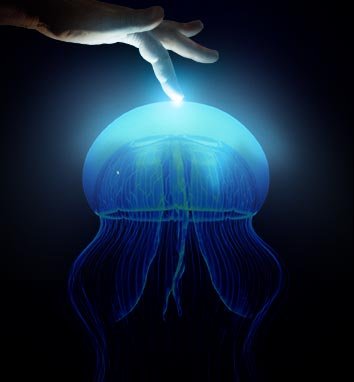
Source
For this to happen a substance called luciferin is needed. Luciferin is a chemical compound capable of emitting light. For this, an enzyme called luciferase and oxygen is needed. When it binds to oxygen (that is, it oxidizes), luciferin, thanks to the help of luciferase, releases certain substances producing light. Luciferase actually consists of a whole family of molecules that vary in different aspects according to the species that presents it. However, they all work in the same way, roughly. The mechanism is quite simple: for any substance in the universe to produce light it takes energy. The energy excites some particles of the molecules, the electrons, which lose this energy by releasing it in the form of photons, that is, light.

Source
The energy, in this case, comes from the reaction with oxygen, which excites the electrons of luciferase. When they "relax", they emit light. But there are also other types of bioluminescence called phosphorescence and fluorescence. These processes are the same as we can see in fluorescent or phosphorescent objects.
What is the difference between them?
As we said, in order to emit light, energy is needed. In the case of fluorescence and phosphorescence, energy is absorbed from ultraviolet light. The fluorescent substances absorb that light and emit it immediately. Phosphorescence, however, emits light for a longer time, holding minutes or hours in the process. Both phenomena occur in living beings, so they enter into bioluminescence. Luciferase, the third "method" of producing light ", is more advanced and complex, being able to control at will." Phosphorescence, fluorescence or bioluminescence by luciferase, all these forms are present in an incredible amount of living beings.
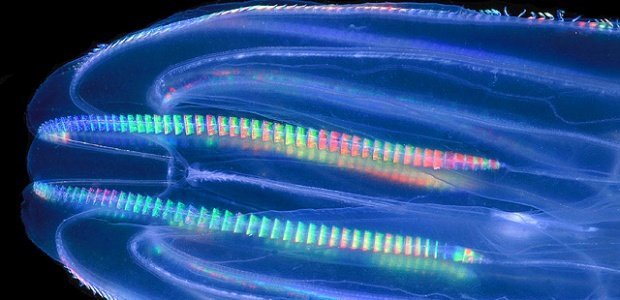
Source
Marine bacteria are the most abundant organisms among luminescent organisms; there are free-living or symbiotic living on the surface of other marine organisms or within their cavities, for example within their digestive tract. Invertebrates, such as ctenophores, crustaceans, cephalopods, salps, and others, as well as some marine vertebrates (deep-sea fish), produce bioluminescence. The color of light is usually from blue to green, and in fewer cases, has reddish tones. According to the species of the organisms, the bioluminescence can be produced by the symbiont bacteria that provide the substances for the biochemical reaction, or by specialized organs where the process is carried out.
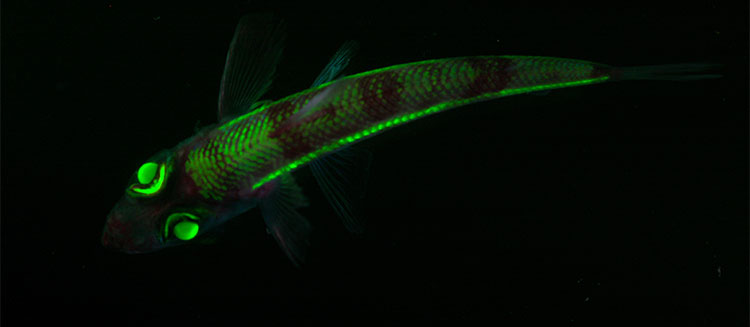
Source
Ways to shine.
The brightness of a firefly.
The fireflies synthesize the substance called luciferin that is oxidized with the help of the enzyme, luciferase. This reaction is highly effective, practically without loss of energy.The brightness of a jellyfish.
Fluorescent jellyfish are probably the sumum of sophistication in bioluminescence. They have a protein capable of receiving high energy light (usually in the UV range) called GFP (Green Fluorescence Protein) that emits fluorescence in the range of green light.
Jellyfish are not the only bioluminescent marine beings, it is believed that more than 90% of the animal species of the middle and abyssal portion of the ocean emit some type of bioluminescence.
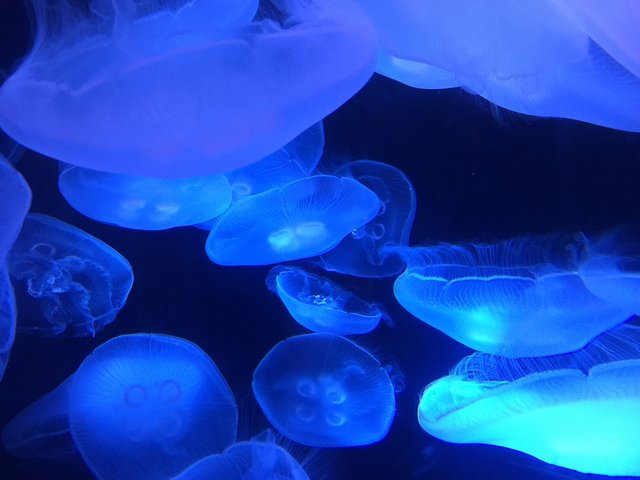
Source
Types of bioluminescence.
- Intracellular bioluminescence.
The intracellular bioluminescence is generated by specialized cells of the own body of some multicellular or unicellular species (such as dinoflagellates) and whose light is emitted to the outside through the skin or intensified by lenses and reflective materials such as the urate crystals of the fireflies or the guanine plates of certain fish.
This type of luminescence is typical of many species of squid and dinoflagellates, especially of the genus Protoperidinium.
- Extracellular bioluminescence.
Extracellular bioluminescence occurs from the reaction between luciferin and luciferase outside the body. Once synthesized, both components are stored in different glands in the skin or under it.
The expulsion and consequent mixing of both reagents abroad produce luminous clouds. This type of luminescence is common to many crustaceans and some abyssal cephalopods.
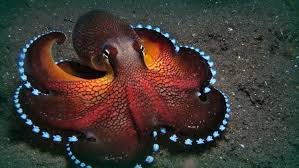.jpg)
Source
- Symbiosis with luminescent bacteria.
This phenomenon is known only in marine animals such as coelenterates, worms, mollusks, echinoderms, and fish. It seems to be the luminescence phenomenon of biological origin more widespread in the animal kingdom. In different parts of the body, animals have small bladders, commonly called photophores, where they keep luminescent bacteria.
Some species produce continuous light whose intensity can be neutralized or modulated by various specialized structures. Normally the luminous organs are connected to the nervous system, which allows the animal to control the light emission at will.
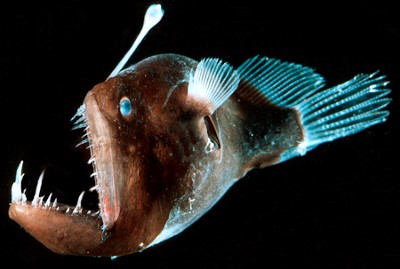.jpg)
Source
There are different hypotheses with respect to what is the function of bioluminescence, many of them still to be confirmed. Basically, they can be grouped in functions of feeding, defense, and reproduction.
Some fish, squid, and insects, use their bioluminescent capacity as bait in order to attract their prey and obtain their food. However, others, such as the Malacosteidae family of fish, the general (Malacostus, Aristostomias, and Pachystomias), have special photophores that emit red light. They use them as a flashlight to light their prey in the deep sea. On the other hand, to escape the predators, certain fish, squid, and shrimp, use their own light, as a trap to confuse the attacker during daylight hours, camouflaging themselves with the sun's brightness and thus blurring their own shadow.
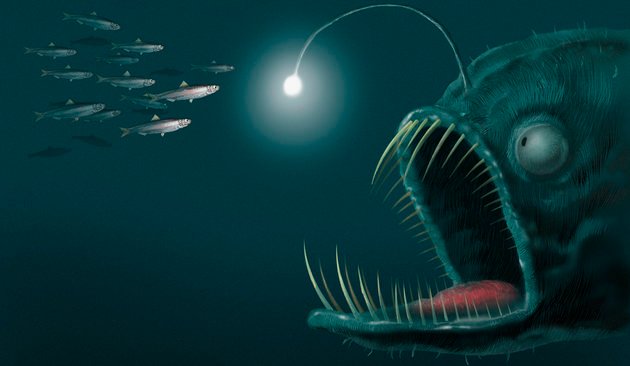
Source
Finally, in its function of reproduction, the best-known example is the fireflies, Lampyris nocticula, which exchange flashes between males and females in order to facilitate their recognition and attract the couple for mating. In this way, they avoid confusion between the different species, since they emit their lights at different wavelengths and frequencies. However, this "love call" has been adopted by species of the genus Photuris, which depredates the males it attracts from other species of fireflies. In some marine animals, such as the polychaetes, the males attract the twinkling females. As a result, huge swarms form for the coupling.
Nowadays, this phenomenon can be exploited by man, for example, luminescent bacteria can be used in the detection of toxic and mutagenic substances in aquatic environments; adding these toxic substances to bacterial cultures, the decrease in bioluminescent intensity is measured. Day after day, research continues on this fascinating phenomenon and its possible application in biotechnology.
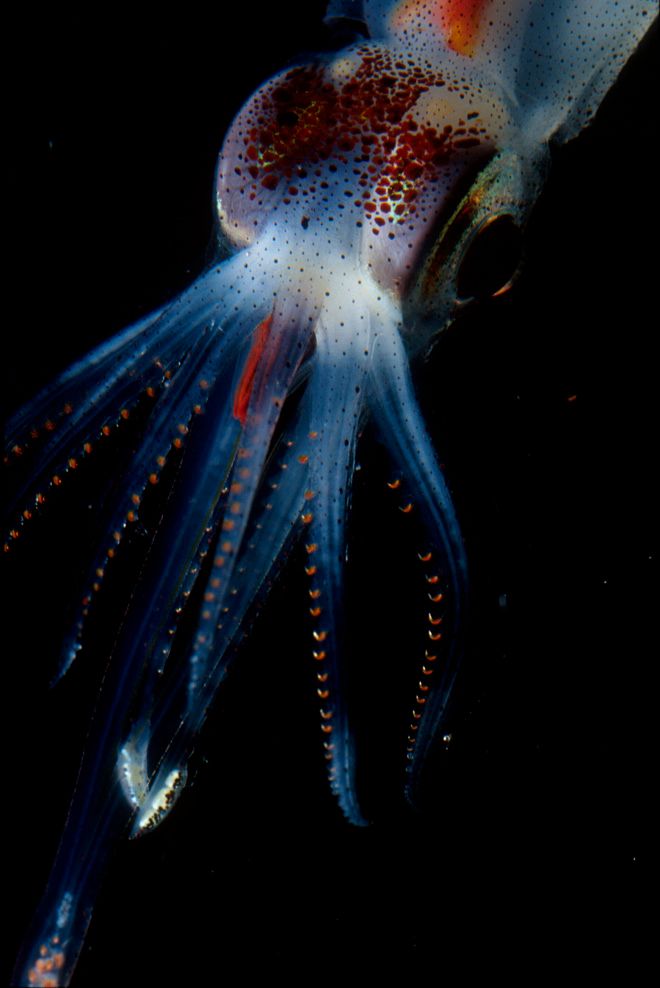
@robertoromero nice write up on bioluminescence. There are some incredible fungi that light up the forrest too.

Credit: Wikimedia Commons